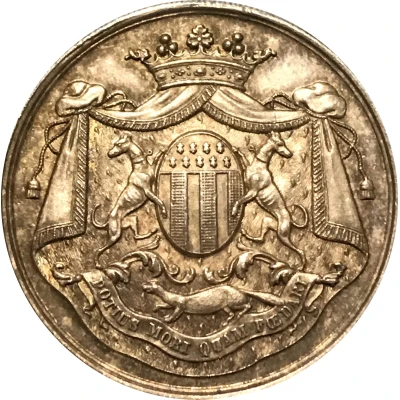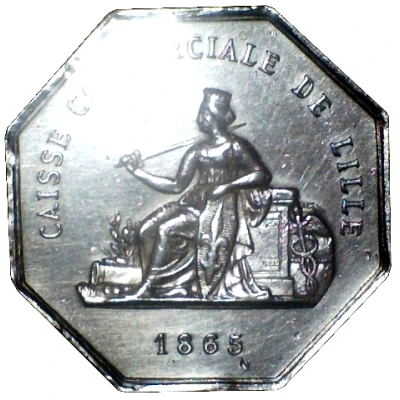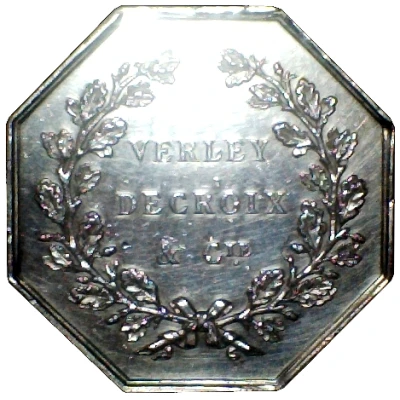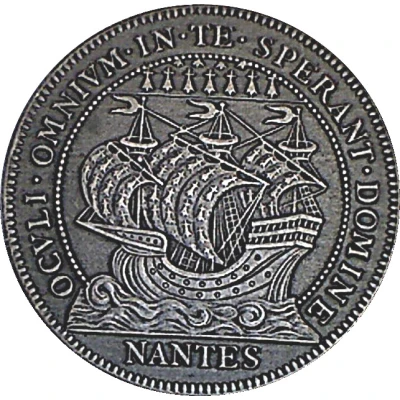
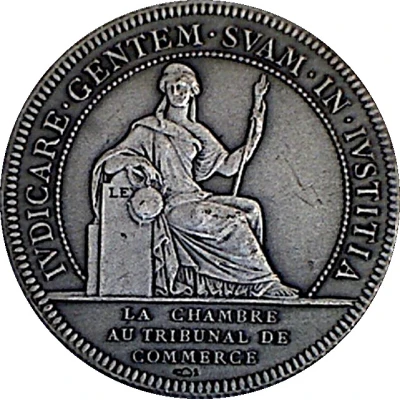

© urane
Token - Tribunal de commerce de Nantes ND
| Silver (.950) | 14.85 g | 31.60 mm |
| Location | France |
|---|---|
| Period | Third Republic (1870-1940) |
| Type | Commemorative medals › Company, institution and association medals |
| Years | 1860-1879 |
| Currency | France - Trade and Bank Tokens |
| Composition | Silver (.950) |
| Weight | 14.85 g |
| Diameter | 31.60 mm |
| Thickness | 2.40 mm |
| Shape | Round |
| Technique | Milled |
| Updated | 2024-11-12 |
| Numista | N#133329 |
|---|---|
| Rarity index | 89% |
Reverse
Justice sitting on the left
Script: Latin
Lettering:
IVDICARE • GENTEM • SVAM • IN • JVSTITIA
LA CHAMBRE
AU TRIBUNAL DE
COMMERCE
Poinçon : Corne 1 (1880 -)
Edge
Milled
Comment
The hallmark is manually affixed to the exergue of the justice. This unusual position is certainly due to the fluted edge of the token.Variant: hallmark on fluted edge
The first chamber of commerce was created in Marseille at the end of the 16th century. In Paris, the six corps des marchands and the juges-consuls had a role similar to that of a chamber of commerce: an association of merchants meeting to deliberate on the interests of their city or region and give their opinions to the government. Colbert legalized them in 1664, stipulating that each trading post would choose two of their number to represent it. However, the institution was not really established until the Council decree of August 30, 1701, and numerous chambers of commerce sprang up in the 18th century in Lyon, Rouen, Toulouse, Montpellier, Bordeaux and elsewhere.
The most important of these was Marseille, which was responsible for all trade with the Levant and came under the Department of Foreign Affairs, while the others came under the Contrôle Général des Finances. Suppressed by the Constituent Assembly in 1791, the Chambers of Commerce were re-established under the Consulate. Since 1832, they have been recruited by election. In 1898, they became Chambers of Commerce and Industry, grouped into 21 regional chambers.
